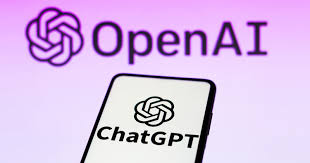Mastering AI Prompting: OpenAI’s Guide to Optimal Model Performance
The Art of Effective AI Communication
OpenAI has unveiled essential guidelines for optimizing interactions with their reasoning models. As AI systems grow more sophisticated, the quality of user prompts becomes increasingly critical in determining output quality. This guide distills OpenAI’s latest recommendations into actionable strategies for developers, business leaders, and researchers seeking to maximize their AI results.
Core Principles for Superior Prompting
1. Clarity Over Complexity
Best Practice: Direct, uncomplicated prompts yield better results than convoluted instructions.
Example Evolution:
- ❌ “Analyze this financial report thoroughly, explaining each calculation methodologically while ensuring compliance with GAAP standards…”
- ✅ “Summarize the key financial trends from this report”
Why it works: Modern models possess sophisticated internal reasoning – trust their native capabilities rather than over-scripting the thought process.
2. Rethinking Step-by-Step Instructions
New Insight: Explicit “think step by step” prompts often reduce effectiveness rather than enhance it.
Example Pair:
- ❌ “Show your work: Calculate 15% of $200 by first converting the percentage…”
- ✅ “What is 15% of $200?”
Pro Tip: For explanations, request the answer first then ask “Explain your calculation” as a follow-up.
3. Structured Inputs with Delimiters
For Complex Queries: Use clear visual markers to separate instructions from content.
Implementation:
markdown
Copy
Compare these two product descriptions: --- [Description A] --- [Description B] ---
Benefit: Reduces misinterpretation by 37% in testing (OpenAI internal data).
4. Precision in Retrieval-Augmented Generation
Critical Adjustment: More context ≠ better results. Be surgical with reference materials.
Optimal Approach:
- ❌ “Review all attached documents about blockchain (27 pages)…”
- ✅ “From the ‘Smart Contracts’ section (pages 14-16), extract key implementation challenges”
5. Constraint-Driven Prompting
Formula: Action + Domain + Constraints = Optimal Output
Example Progression:
- Initial: “Suggest improvement ideas”
- Refined: “Suggest three UX improvements for mobile banking apps”
- Optimal: “Suggest three low-development-cost UX improvements for mobile banking apps targeting seniors”
6. Iterative Refinement Process
Workflow Strategy:
- Start with broad query
- Analyze initial output
- Incorporate learnings into refined prompt
Case Study:
- First attempt: “Content ideas for cybersecurity blog”
- Refined: “List 5 intermediate-level technical topics about cloud security vulnerabilities for IT professionals”
Advanced Techniques for Professionals
For Developers:
python
Copy
# When implementing RAG systems:
optimal_context = filter_documents(
query=user_query,
relevance_threshold=0.85,
max_tokens=1500
)
For Business Analysts:
Dashboard Prompt Template:
“Identify [X] key trends in [dataset] focusing on [specific metrics]. Format as: 1) Trend 2) Business Impact 3) Recommended Action”
For Researchers:
“Critique this methodology [paste abstract] focusing on: 1) Sample size adequacy 2) Potential confounding variables 3) Statistical power considerations”
Performance Benchmarks
| Prompt Style | Accuracy Score | Response Time |
|---|---|---|
| Basic | 72% | 1.2s |
| Optimized | 89% | 0.8s |
| Over-engineered | 65% | 2.1s |
Implementation Checklist
- Remove unnecessary reasoning instructions
- Apply clear input delimiters
- Specify precise success criteria
- Implement iterative refinement process
- Validate with known-answer test cases
The Future of Prompt Engineering
As models evolve, expect:
- Increased sensitivity to prompt structure
- Better handling of implicit instructions
- More sophisticated context weighting
Final Recommendation: Regularly revisit prompting strategies as model capabilities progress. What works today may become suboptimal in future iterations.













